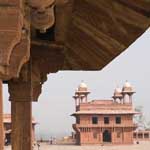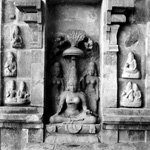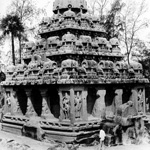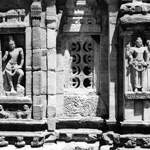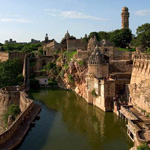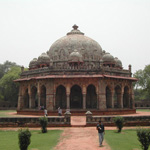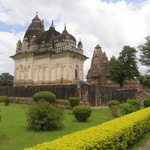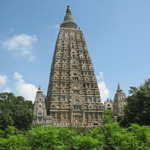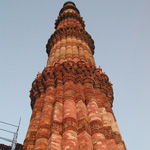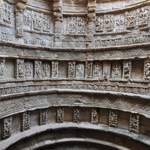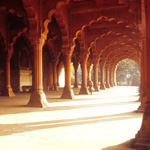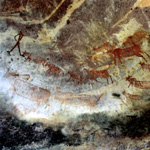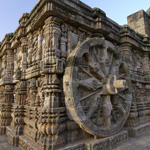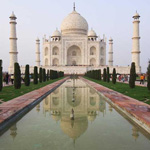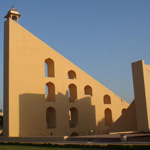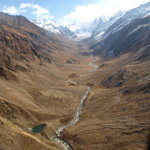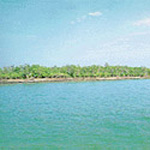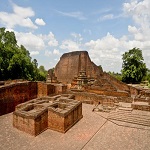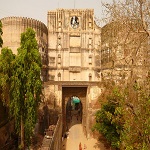- About Us
- Schemes
- Culture Scheme Dashboard
- Scheme of Financial Assistance for Promotion of Art and Culture
- Financial Assistance to Cultural Organizations with National Presence
- Cultural Function and Production Grant(CFPG)
- Financial Assistance for Preservation and Development of Cultural Heriatge of the Himalayas
- Financial Assistance for Development of Buddhist/Tibetan Arts and Culture
- Financial Assistance for Cultural Activities in Performing Arts for Building Grants Including Studio Theatres
- Financial Assistance for Allied Cultural Activities
- Financial Assistance for Promotion of Guru-Shishya Parampara (Repertory grant)
- National Mission on Libraries
- Financial Assistance for Construction of Tagore Cultural Complexes(TCC)
- Scheme of Financial Assistance under Seva Bhoj Yojna
- Scheme of Scholarship and Fellowship for Promotion of Art and Culture
- Museum Grant Scheme
- Scheme for Financial Assistance for Veteran Artists
- Scheme for Promotion of Culture of Science (SPOCS)
- Scheme for Safeguarding the Intangible Cultural Heritage
- Global Engagement Scheme
- Indian Conservation Fellowship Program (ICFP)
- Centenary and Anniversary Celebrations Scheme
- Mission
- ICR
- Commemorations
- CSL
- G20 CWG
- Contact Us
 World Heritage
World Heritage
Please Enable Js to Load the Map
Agra Fort (1983)
Ajanta Caves (1983)
Buddhist Monuments at Sanchi (1989)
Champaner-Pavagadh Archaeological Park (2004)
Chhatrapati Shivaji Terminus (formerly Victoria Terminus) (2004)
Churches and Convents of Goa (1986)
Elephanta Caves (1987)
Ellora Caves (1983)
Fatehpur Sikri (1986)
Great Living Chola Temples (1987)
Group of Monuments at Hampi (1986)
Group of Monuments at Mahabalipuram (1984)
Group of Monuments at Pattadakal (1987)
Hill Forts of Rajasthan (2013)
Humayun's Tomb, Delhi (1993)
Khajuraho Group of Monuments (1986)
Mahabodhi Temple Complex at Bodh Gaya (2002)
Mountain Railways of India (1999)
Qutb Minar and its Monuments, Delhi (1993)
Rani-ki-Vav (the Queen’s Stepwell) at Patan, Gujarat (2014)
Red Fort Complex (2007)
Rock Shelters of Bhimbetka (2003)
Sun Temple, Konârak (1984)
Taj Mahal (1983)
The Jantar Mantar, Jaipur (2010)
Archaeological Site of Nalanda Mahavihara (Nalanda University) at Nalanda, Bihar(2016)
The Architectural Work of Le Corbusier, an Outstanding Contribution to the Modern Movement(2016)
Historic City of Ahmadabad(2017)
Victorian Gothic and Art Deco Ensembles of Mumbai (2018)
Jaipur city, Rajasthan (2019)
Great Himalayan National Park (2014)
Kaziranga National Park (1985)
Keoladeo National Park (1985)
Manas Wildlife Sanctuary (1985)
Nanda Devi and Valley of Flowers National Parks (1988)
Sundarbans National Park (1987)
Western Ghats (2012)
Khangchendzonga National Park(2016)
Close


The Architectural Work of Le Corbusier, an Outstanding Contribution to the Modern Movement(2016)
Chandigarh
38 Sites
Man Made
- Agra Fort (1983)
- Ajanta Caves (1983)
- Buddhist Monuments at Sanchi (1989)
- Champaner-Pavagadh Archaeological Park (2004)
- Chhatrapati Shivaji Terminus (formerly Victoria Terminus) (2004)
- Churches and Convents of Goa (1986)
- Elephanta Caves (1987)
- Ellora Caves (1983)
- Fatehpur Sikri (1986)
- Great Living Chola Temples (1987)
- Group of Monuments at Hampi (1986)
- Group of Monuments at Mahabalipuram (1984)
- Group of Monuments at Pattadakal (1987)
- Hill Forts of Rajasthan (2013)
- Humayun's Tomb, Delhi (1993)
- Khajuraho Group of Monuments (1986)
- Mahabodhi Temple Complex at Bodh Gaya (2002)
- Mountain Railways of India (1999)
- Qutb Minar and its Monuments, Delhi (1993)
- Rani-ki-Vav (the Queen’s Stepwell) at Patan, Gujarat (2014)
- Red Fort Complex (2007)
- Rock Shelters of Bhimbetka (2003)
- Sun Temple, Konârak (1984)
- Taj Mahal (1983)
- The Jantar Mantar, Jaipur (2010)
- Archaeological Site of Nalanda Mahavihara(Nalanda University) at Nalanda, Bihar(2016)
- The Architectural Work of Le Corbusier, an Outstanding Contribution to the Modern Movement(2016)
- Historic City of Ahmadabad(2017)
- Victorian Gothic and Art Deco Ensembles of Mumbai (2018)
- Jaipur city, Rajasthan (2019)
Natural
Mixed
Culture plays an important role in the development of any nation. It represents a set of shared attitudes, values, goals and practices. Culture and creativity manifest themselves in almost all economic, social and other activities. A country as diverse as India is symbolized by the plurality of its culture. Article 29 of the Constitution of India, 1950 forebears the dictum of Unity in Diversity to which this ancient civilization adheres to:
"...Any section of the citizens residing in the territory of India or any part thereof having a distinct language, script or culture of its own shall have the right to conserve the same".
Article 29 (2) of the Constitution of India speaks of Cultural and Educational Rights also refer to the protection of interests of minorities:
“...No citizen shall be denied admission into any educational institution maintained by the State or receiving aid out of State funds on grounds only of religion, race, caste, language or any of them”.
The plurality and multiplicity of the Indian Culture is evident to the whole World as India has one of the world’s largest collections of songs, music, dance, theatre, folk traditions, performing arts, rites and rituals, languages, dialects, paintings and writings that are known, as the ‘Intangible Cultural Heritage’ (ICH) of humanity. Thus, on this premise was born the philosophy and the concept of having academies of national importance.
The year 1950 was a milestone to an epoch-making decade in India’s history, since that was the year India declared itself as a sovereign republic. The Planning Commission of India was set up on 15 March 1950. This Commission in its very first plan envisaged that culture is integral to the Planning process as a whole. That it is intrinsic to the concept of planned national development.
With every subsequent Plan periods, the Government of India founded a number of institutions that determined its cultural policy and also thereby determined, for several other agencies, the dominant paradigms for the ‘arts & culture’ field as a whole. Among the major ones are the Indian Council of Cultural Relations (1950), the Sangeet Natak Akademi (1953), the National Museum, the Sahitya Akademi, the National Gallery of Modern Art and the Lalit Kala Akademi (all set up in 1954, following a Parliamentary Resolution initiated by India’s first Prime Minister, Jawaharlal Nehru and first Education Minister, Maulana Azad), the Film Institute of India (1959), the National School of Drama (1959) and the National Institute of Design (1961).
The role of these cultural institutions fits mainly within a very different concept of cultural nationalism. In brief, national cultural policy, as guided by the Planning Commission of India, in the period right after Independence adhered to the following five definitional criteria:
- First, that India’s cultural policy presumes that India’s cultural resources, represented by the artisans, stakeholders, practitioners and craftsmen, are a repository of national resources as well, and as such are central to the very enterprise of nationalism, informing all of its programmes.
- Second, that they contribute a crucial component to India’s nationalist project of identifying and protecting its national heritage.
- Third, while the protection and sustenance of the artisan has a cultural justification as representative of national heritage, it is nevertheless its economic component that gives it such visibility and has to be adequately dealt
- Fourth, that the administrative elements of culture that arise from such a cultural policy therefore most directly impact the field of education
- And five, that under the Nehruvian Socialism, the philosophy of then cultural policy sought a synergy between the support and development of artisanal practices on the one hand and the stated nationalist goals of industrialism and the emphasis on science and technology on the other.
Based on these guiding principles Government of India has formulated and undertaken several measures to take care of the development of Tangible/Intangible Arts of the State. After ratification of the Convention of Safeguarding of the Intangible Cultural Heritage in 2005, Government has placed further serious efforts through its various agencies, Semi-Government agencies, and Regional Government agencies, NGOs that support the elements of Intangible Cultural Heritage by various ways for their growth, sustenance, further visibility, and development.
The intangible cultural heritage constitutes a set of living and constantly recreated practices, knowledge and representations enabling individuals and communities, at all levels, to express their broad conception through systems of values and ethical standards. The following multi-pronged system has been delineated to safeguard the Intangible cultural heritage of India:
- At National level: Academies (Sangeet Natak Akademi, Sahitya Akademi & Lalit Kala Akademi), autonomous bodies (Like I.C.C.R.), Subordinate Bodies (Like Anthropological Survey of India) and various autonomous institutions, missions and surveys are constituted
- At State level: various Zonal Cultural Centres, covering the states of India zone wise, are ordained- East Zone, North Zone, North Central Zone, South Central Zone, South Zone and the West Zone
- Creates among communities a sense of belonging and continuity by fostering community participation at regional, district and grassroots level
For more information please visit http://en.unesco.org/ ![]()
2021
Representative List of the Intangible Cultural Heritage of Humanity2017
Representative List of the Intangible Cultural Heritage of Humanity2016
Representative List of the Intangible Cultural Heritage of Humanity2014
Representative List of the Intangible Cultural Heritage of Humanity2013
Representative List of the Intangible Cultural Heritage of Humanity2012
Representative List of the Intangible Cultural Heritage of Humanity2010
Representative List of the Intangible Cultural Heritage of Humanity2009
Representative List of the Intangible Cultural Heritage of HumanityNovruz, Nowrouz, Nooruz, Navruz, Nauroz, Nevruz

Ramman, religious festival and ritual theatre of the Garhwal Himalayas, India

2008
Representative List of the Intangible Cultural Heritage of Humanity
-
Archives of the Dutch East India Company

Documentary heritage submitted by Netherlands and recommended for inclusion in the Memory of the World Register in 2003.
-
laghukālacakratantrarājatikā (Vimalaprabhā)

Documentary heritage submitted by India and recommended for inclusion in the Memory of the World Register in 2011.
-
Documentary heritage submitted by India and recommended for inclusion in the Memory of the World Register in 2007.
-
Saiva Manuscript in Pondicherry

Documentary heritage submitted by India and recommended for inclusion in the Memory of the World Register in 2005.
-
Documentary heritage submitted by India and recommended for inclusion in the Memory of the World Register in 2013.
-
Documentary heritage submitted by India and recommended for inclusion in the Memory of the World Register in 2011.
-
The I.A.S. Tamil Medical Manuscript Collection

Documentary heritage submitted by India and recommended for inclusion in the Memory of the World Register in 1997.
-
Documentary heritage submitted by India and recommended for inclusion in the Memory of the World Register in 2017.
-
Documentary heritage submitted by India and recommended for inclusion in the Memory of the World Register in 2017.
For more information please visit www.unesco.org ![]()











